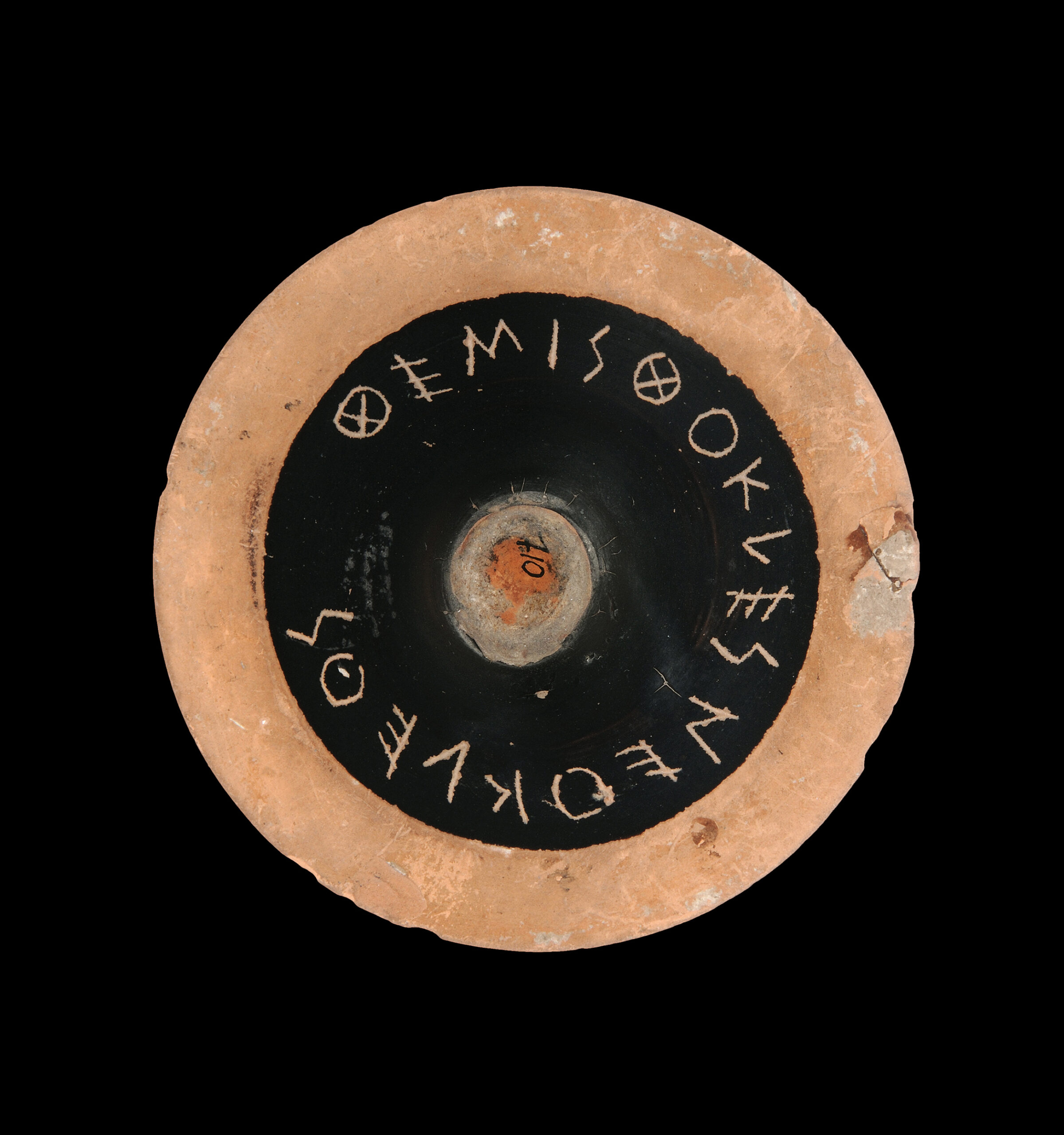

Clay ostrakon (vase fragment) with the name of Themistocles
Athenian democracy was based on the active participation of citizens in the legislative and juridical institutions of the city. Participation was either direct or via representatives selected by lot. The so-called ostracism was a case of direct participation. According to a law introduced by Cleisthenes, if a substantial number of citizens believed that a member of the community threatened democracy, then an ostracism should take place to decide whether this member should be exiled for ten years or not. All citizens could participate, inscribing the name of the individual they believed should be exiled on ostracon, that is the broken fragment of a clay vase. Τo exile an individual, at least 6.000 citizens should vote for it.
The illustrated ostracon bears the names of general Themistocles and his father Neocles (ΘΕΜΙΣΤΟΚλΗΣΝΕΟΚΛΕΟΥΣ). It was used as a ballot in the ostracism of Themistocles, which took place in Athens shortly before 470 BC.
PUBLICATION
Empereur J.-Y. 1981. ‘Collection Paul Canellopoulos (XVII). Petits objets inscrits’, Bulletin de correspondance hellénique 105, 537-568, esp. 553.
